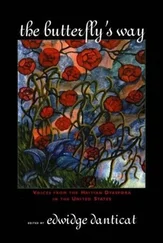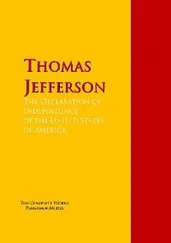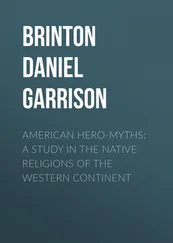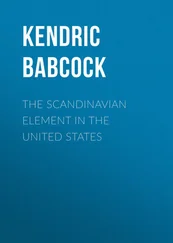Hubert Bancroft - The Native Races [of the Pacific states], Volume 5, Primitive History
Здесь есть возможность читать онлайн «Hubert Bancroft - The Native Races [of the Pacific states], Volume 5, Primitive History» — ознакомительный отрывок электронной книги совершенно бесплатно, а после прочтения отрывка купить полную версию. В некоторых случаях можно слушать аудио, скачать через торрент в формате fb2 и присутствует краткое содержание. Жанр: foreign_antique, foreign_prose, на английском языке. Описание произведения, (предисловие) а так же отзывы посетителей доступны на портале библиотеки ЛибКат.
- Название:The Native Races [of the Pacific states], Volume 5, Primitive History
- Автор:
- Жанр:
- Год:неизвестен
- ISBN:нет данных
- Рейтинг книги:5 / 5. Голосов: 1
-
Избранное:Добавить в избранное
- Отзывы:
-
Ваша оценка:
- 100
- 1
- 2
- 3
- 4
- 5
The Native Races [of the Pacific states], Volume 5, Primitive History: краткое содержание, описание и аннотация
Предлагаем к чтению аннотацию, описание, краткое содержание или предисловие (зависит от того, что написал сам автор книги «The Native Races [of the Pacific states], Volume 5, Primitive History»). Если вы не нашли необходимую информацию о книге — напишите в комментариях, мы постараемся отыскать её.
The Native Races [of the Pacific states], Volume 5, Primitive History — читать онлайн ознакомительный отрывок
Ниже представлен текст книги, разбитый по страницам. Система сохранения места последней прочитанной страницы, позволяет с удобством читать онлайн бесплатно книгу «The Native Races [of the Pacific states], Volume 5, Primitive History», без необходимости каждый раз заново искать на чём Вы остановились. Поставьте закладку, и сможете в любой момент перейти на страницу, на которой закончили чтение.
Интервал:
Закладка:
14
Lescarbot , Hist. Nouv. France , lib. i., cap. iii.
15
Hist. Conq. Itza , pp. 26-8.
16
Pamphleteer , 1815. Thompson calculates the spreading of Noah's children up to the time of Peleg, when the Bible declares the earth to have been divided. He also shows that this division happened earlier than is generally supposed.
17
Orrio , Solucion , p. 41, et seq. Torquemada also believes Ham to have been the father of the race. Monarq. Ind. , tom. i., pp. 21-30.
18
Nieuwe Weereld , p. 37.
19
L'Estrange , Americans no Jewes .
20
Deserts , vol. i., p. 26. 'The Peruvian language,' writes Ulloa, 'is something like the Hebrew, and Noah's tongue was doubtless Hebrew.' Noticias Americanas , p. 384.
21
Clavigero , Storia Ant. del Messico , tom. iv., p. 17.
22
In Soc. Mex. Geog., Boletin , 2da época, tom. iii., p. 343.
23
See vol. iii. of this work, p. 450, et seq.
24
Storia Ant. del Messico , tom. iv., p. 15. Heredia y Sarmiento follows Clavigero. Sermones , p. 84.
25
Mex. Antiq. , vol. vi., p. 401. Priest, Amer. Antiq. , pp. 142-3, thinks that an ivory image representing a mother and child found in Cincinnati, may have been taken to Britain by the Greeks or Romans, who knew of the prophecies concerning the Virgin and Child Jesus, and thence brought to America. See, also, concerning religious belief, baptism, circumcision, and other Christian-like rites in the New World: Tylor's Anahuac , pp. 279-80; Prescott's Mex. , vol. iii., pp. 378-85; Schoolcraft's Arch. , vol. i., pp. 17-18; M'Culloh's Researches on Amer. , pp. 111-40; Latrobe's Rambler , pp. 205-6.
26
See vol. iii., pp. 66-9, and comments in accompanying notes.
27
Id. , pp. 72-5.
28
Id. , p. 76.
29
Id. , pp. 78-9.
30
Id. , p. 86.
31
Id. , p. 88.
32
Id. , p. 89.
33
Id. , p. 103.
34
Mackenzie's Voyages , p. cxviii.
35
'Ou plutôt deux femmes, portant le nom d'Ara,' says Brasseur de Bourbourg; I prefer, however, the original reading. The Ara is a kind of parroquet, common in South America, and so called because it continually repeats the cry ara, ara . Beings half bird, half woman, are as likely to figure in such a legend as the above as not. Besides, shortly afterwards the narrative speaks of 'les deux oiseaux,' referring to the aras.
36
For both of these flood-myths see: Brasseur de Bourbourg , in Landa , Relacion , pp. xxx-xxxii. Herrera, Hist. Gen. , dec. v., lib. iii., cap. vi., gives a native tradition which relates that long before the time of the Incas there was a great deluge, from which some of the natives escaped by fleeing to the mountain-tops. The mountain tribes assert, however, that only six persons escaped this flood in a balsa.
37
Kingsborough's Mex. Antiq. , vol. viii., p. 25.
38
See vol. iii., p. 67.
39
See vol. iii., pp. 77, 89.
40
According to Ixtlilxochitl, the Toltec tradition relates that after the confusion of tongues the seven families who spoke the Toltec language set out for the New World, wandering one hundred and four years over large extents of land and water. Finally they arrived at Huehue Tlapallan in the year 'one flint,' five hundred and twenty years after the flood. Relaciones , in Kingsborough's Mex. Antiq. , vol. ix., p. 322. See also another account, p. 450; Boturini , Crón. Mex. , pt ii., pp. 5-8; Id. , Idea , pp. 111-27; Veytia , Hist. Ant. Mej. , tom. i., pp. 24, 145, 212-13; Mendieta , Hist. Ecles. , p. 145; Hist. y Antig. , in Soc. Mex. Geog., Boletin , tom. i., p. 284; Juarros , Hist. Guat. , (Guat. 1857) tom. ii., pp. 55-6; Delafield's Antiq. Amer. , p. 34; Humboldt , Vues , tom. i., pp. 114-15; Prescott's Mex. , vol. iii., pp. 380-1; Davis' Anc. Amer. , p. 31; Tylor's Anahuac , p. 277.
41
They had also, as we have seen in the third volume, a great many curious ideas as to the way in which man was created, and as in attempting to prove their theories many writers are apt to draw analogies in this particular, I give a brief résumé of the creation-myths here for the reader's convenience: The grossest conceptions of the mystery of the beginning of man are to be found among the rude savages of the north, who, however, as they are quite content, in many instances, to believe that their earliest progenitor was a dog or a coyote, seem entitled to some sympathy from the latest school of modern philosophy, though it is true that their process of development was rather abrupt, and that they did not require very many links in their chain of evolution. But as we advance farther south, the attempts to solve the problem grow less simple and the direct instrumentality of the gods is required for the formation of man. The Aleuts ascribe their origin to the intercourse of a dog and a bitch, or, according to another version, of a bitch and a certain old man who came from the north to visit his brute-bride. From them sprang two creatures, male and female, each half man, half fox; and from these two the human race is descended. Others of the Aleuts believe that their canine progenitor fell from heaven. The Tinneh also owe their origin to a dog; though they believe that all other living creatures were called into existence by an immense bird. The Thlinkeet account of the creation certainly does not admit of much caviling or dispute concerning its chronology, method, or general probability, since it merely states that men were "placed on the earth," though when, or how, or by whom, it does not presume to relate. According to the Tacully cosmogony, a musk-rat formed the dry land, which afterwards became peopled, though whether by the agency of that industrious rodent or not, is not stated. Darwinism is reversed by many of the Washington tribes, who hold that animals and even some vegetables are descended from man. The human essence from which the first Ahts were formed, was originally contained in the bodies of animals, who upon being suddenly stampeded from their dwellings left this mysterious matter behind them. Some of the Ahts contend, however, that they are the direct descendants of a shadowy personage named Quawteaht and a gigantic Thunder Bird. The Chinooks were created by a Coyote, who, however, did his work so badly and produced such imperfect specimens of humanity, that but for the beneficent intervention and assistance of a spirit called Ikánam the race must have ended as soon as it began. Some of the Washington tribes originated from the fragments of a huge beaver, which was slain and cut in pieces by four giants at the request of their sister who was pining away for some beaver-fat. The first Shasta was the result of a union between the daughter of the Great Spirit and a grizzly bear. The Cahrocs believe that Chareya, the Old Man Above, created the world, then the fishes and lower animals, and lastly man. The Potoyantes were slowly developed from Coyotes. The Big Man of the Mattoles created first the earth, bleak and naked, and placed but one man upon it; then, on a sudden, in the midst of a mighty whirlwind and thick darkness, he covered the desolate globe with all manner of life and verdure. One of the myths of Southern California attributes the creation of man and the world to two divine beings. The Los Angeles tribes believe their one god Quaoar brought forth the world from chaos, set it upon the shoulders of seven giants, peopled it with the lower forms of animal life, and finally crowned his work by creating a man and a woman out of earth. Still farther south, the Cochimís believe in a sole creator; the Pericúis call the maker of all things Niparaja, and say that the heavens are his dwelling-place; the Sinaloas pay reverence to Viriseva the mother of Vairubi, the first man. According to the Navajos, all mankind originally dwelt under the earth, in almost perpetual darkness, until they were released by the Moth-worm, who bored his way up to the surface. Through the hole thus made the people swarmed out on to the face of the earth, the Navajos taking the lead. Their first act was to manufacture the sun and the moon, and with the light came confusion of tongues. The Great Father and Mother of the Moquis created men in nine races from all manner of primeval forms. The Pima creator made man and woman from a lump of clay, which he kneaded with the sweat of his own body, and endowed with life by breathing upon it. The Great Spirit of the Pápagos made first the earth and all living things, and then men in great numbers from potter's clay. The Miztecs ascribe their origin to the act of the two mighty gods, the male Lion Snake and the female Tiger Snake, or of their sons, Wind of the Nine Snakes and Wind of the Nine Caves. The Tezcucan story is that the sun cast a dart into the earth at a certain spot in the land of Aculma. From this hole issued a man imperfectly formed, and after him a woman, from which pair mankind are descended. The Tlascaltecs asserted that the world was the effect of chance, while the heavens had always existed. The most common Mexican belief was, that the first human beings, a boy and a girl, were produced from the blood-besprinkled fragments of the bone procured from hades by the sixteen hundred fallen gods sprung from the flint-knife of which the goddess Citlalicue had been delivered. According to the Chimalpopoca manuscript the creator produced his work in successive epochs, man being made on the seventh day from dust or ashes. In Guatemala there was a belief that the parents of the human race were created out of the earth by the two younger sons of the divine Father and Mother. The Quiché creation was a very bungling affair. Three times and of three materials was man made before his makers were satisfied with their work. First of clay, but he lacked intelligence; next of wood, but he was shriveled and useless; finally of yellow and white maize, and then he proved to be a noble work. Four men were thus made, and afterwards four women.
Читать дальшеИнтервал:
Закладка:
Похожие книги на «The Native Races [of the Pacific states], Volume 5, Primitive History»
Представляем Вашему вниманию похожие книги на «The Native Races [of the Pacific states], Volume 5, Primitive History» списком для выбора. Мы отобрали схожую по названию и смыслу литературу в надежде предоставить читателям больше вариантов отыскать новые, интересные, ещё непрочитанные произведения.
Обсуждение, отзывы о книге «The Native Races [of the Pacific states], Volume 5, Primitive History» и просто собственные мнения читателей. Оставьте ваши комментарии, напишите, что Вы думаете о произведении, его смысле или главных героях. Укажите что конкретно понравилось, а что нет, и почему Вы так считаете.
![Hubert Bancroft The Native Races [of the Pacific states], Volume 5, Primitive History обложка книги](/books/749157/hubert-bancroft-the-native-races-of-the-pacific-s-cover.webp)









![Hubert Bancroft - The Native Races [of the Pacific states], Volume 1, Wild Tribes](/books/750126/hubert-bancroft-the-native-races-of-the-pacific-s-thumb.webp)

